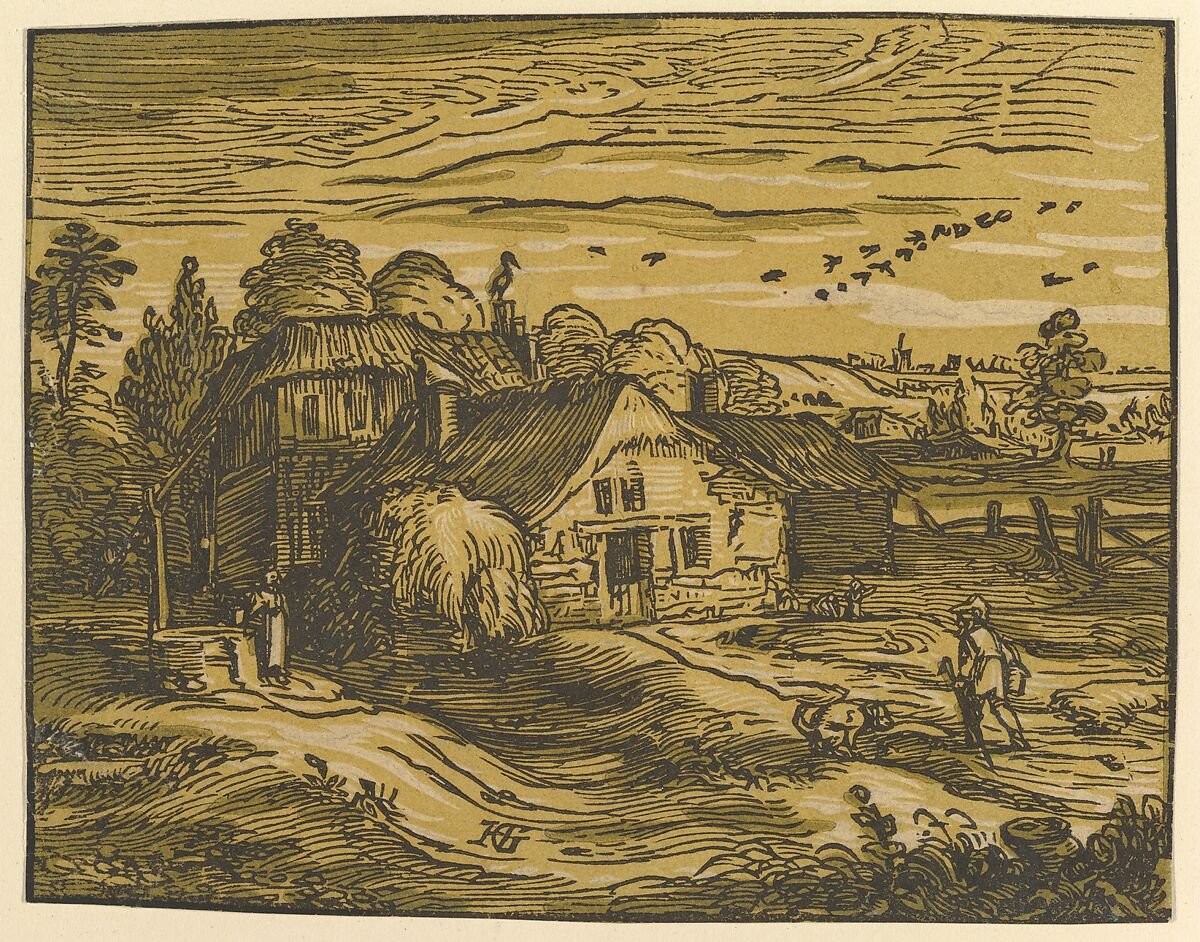Taking the Scenic Route: A Timeline of Landscape Painting
Claude Lorrain (Claude Gellée), The Ford, possibly 1636, Oil on canvas, The Metropolitan Museum of Art
Landscape painting is nothing new. It’s one of the most beautiful genres of painting to gaze at and artists have been painting their surroundings for as long as we have been experiencing it. How, though, has it changed throughout time, and what does our stylistic representation of the world say about how we view it?
In ancient times, Greeks and Romans created frescoes and mosaics of landscapes to decorate rooms; the shan shui tradition of painting with a brush and ink developed as early as the 5th century in China. It involved natural scenery like mountains, rivers, waterfalls, and drew from Daoism, the belief of living in harmony with the universe, and other philosophical traditions.
In the West, landscape painting fell out of favor after the fall of the Roman Empire, only to be revived again in the 16th century. This shift likely corresponds with the Renaissance instigating a growing interest in the natural world. Claude Lorrain focused almost exclusively on classical landscapes. His works were influenced by classical antiquity, often depicting figures from the bible and mythology, imagined settings recalling Arcadia - a legendary and bucolic ancient Greek setting - and streaming sunlight. Like his contemporaries in Dutch Golden Age painting, Lorrain naturalistically renders the landscape, while providing a sensory combination of fresh air, colors, textures, daylight, and nature.
Peter Paul Rubens, A Landscape in Flanders, 1635–40. Oil on wood panel, The Henry Barber Trust, The Barber Institute of Fine Arts, University of Birmingham
The genre of landscape painting provided a secular subject matter for painters at a time when European society was rapidly urbanizing and changing in the aftermath of the Reformation, the religious revolution against the Catholic Church that had led to the establishment of the Protestant Church. Peter Paul Rubens painted landscapes privately for his personal collection; and along with his contemporary Hendrick Goltzius’s woodcut, Landscape with Cottage, many Dutch landscapes suggested national, regional, or local pride, a break from city life, and a more simple focus on leisure and agriculture.
Hendrick Goltzius, Landscape with Cottage, ca. 1597–98, Woodcut, The Metropolitan Museum of Art
The Romantic painters of the 19th century reinterpreted the legacy of these painters and rejected the ordered world of Enlightenment thought for an emphasis on the uncontrollable power of nature. Joseph Mallord William Turner’s Rain, Steam and Speed, with its steam powered train and smog filled air, visualizes how the Industrial Revolution altered the traditions of rural life and showcases how artists became less concerned with classical landscapes. Moody, evocative, and dramatic scenes represented the unpredictable nature of the world and a shift in how artists viewed the world around them, as well as how to visually represent it.
Joseph Mallord William Turner, Rain, Steam, and Speed - The Great Western Railway, 1844, Oil on canvas, The National Gallery
With Impressionism and Post Impressionism, landscapes became less about the beauty of nature and instead began to represent new ways of painting. Compositional choices like color, texture, and form replaced naturalistic renderings. It is within this legacy that contemporary painters continue to tackle landscape painting today.
Lucas Arruda, Untitled (from the Deserto-Modelo series), 2022, Oil on canvas, David Zwirner Gallery
Brazilian painter Lucas Arruda blurs the lines between the imaginative and the meditative. Though they give the impression of a landscape, the artist assures the viewer that his paintings are not of real places; instead, they are evocative pseudo-locations for emotional revelations. Arruda views the landscape not as a place, but as a space for contemplation.
Daisy Dodd Noble, One tree on an island, 2021, Oil on canvas, Courtesy of the artist
London based artist Daisy Dodd Noble paints familiar subjects from landscape painting - trees, hills, mountains and plants - but subverts them into surreal caricatures. Using bright colors and organic shapes, Noble’s scenes are a portal to an alternate, whimsical reality, evocative of Brazilian modernist Tarsila do Amaral.
The elements of fantasy, abstraction, and dreams that invoke Arruda and Noble’s paintings can also be seen in the landscapes of David Hockney. Unusual colors and geometric forms permeate throughout Hockney’s depictions of Yorkshire landscapes. His conceptual arrangements of space result in an almost naturalistic rendering of these locations, despite his experimentations with abstraction. Hockney’s landscapes are maybe not what he is best known for, but they exhibit the wide variety of stylistic experimentation in landscape painting.





